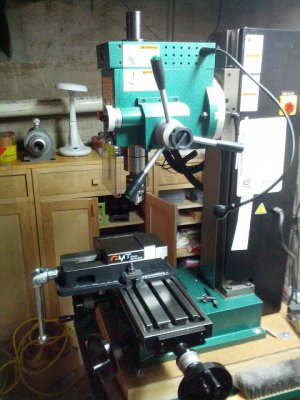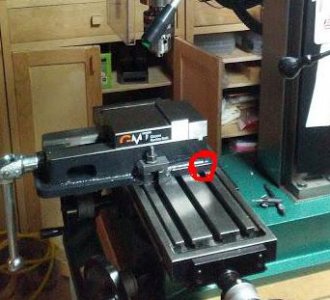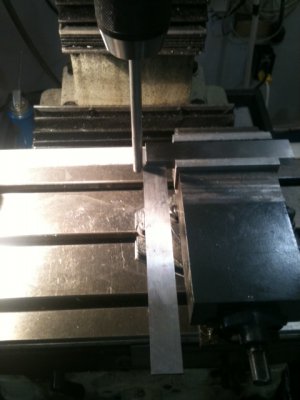- Joined
- Feb 22, 2012
- Messages
- 924
I often see people mounting their vises on the mill table using the center T slot. If I was to mount my vise using the center T slot it would result in the vise stationary jaw to be further closer to the mill column, and for the majority of my work I would have to advance the Y axis toward me to position the work under quill which means that my work center is far from my mill table Y center which limits my Y travel in 1 direction.
I installed my vise so that the work center of most my projects is about the same as the Y center of the table. that means my locking bolt is not the center slot:

That got me thinking - is there a consensus of what's the 'proper' positioning of a vise? or is it 'whatever works for the current project/machine'?

I installed my vise so that the work center of most my projects is about the same as the Y center of the table. that means my locking bolt is not the center slot:

That got me thinking - is there a consensus of what's the 'proper' positioning of a vise? or is it 'whatever works for the current project/machine'?




